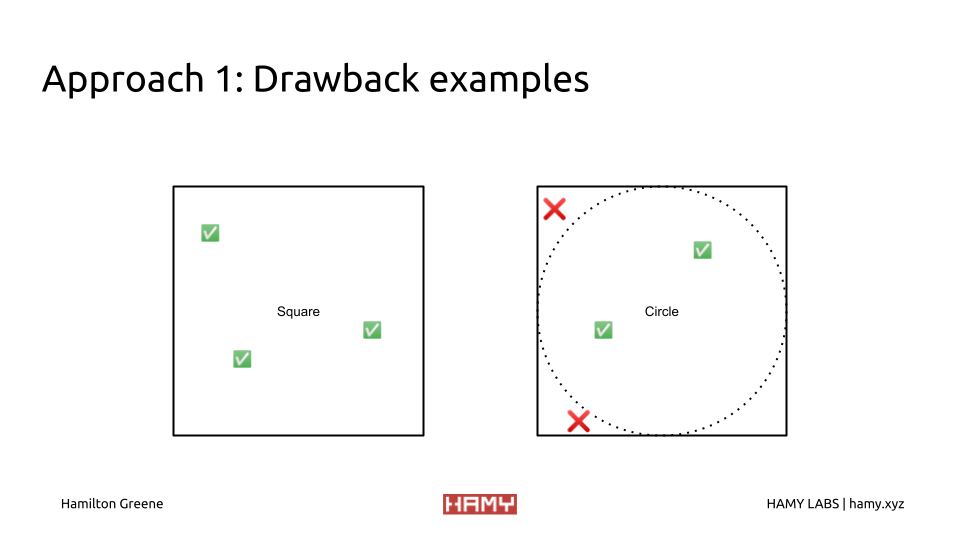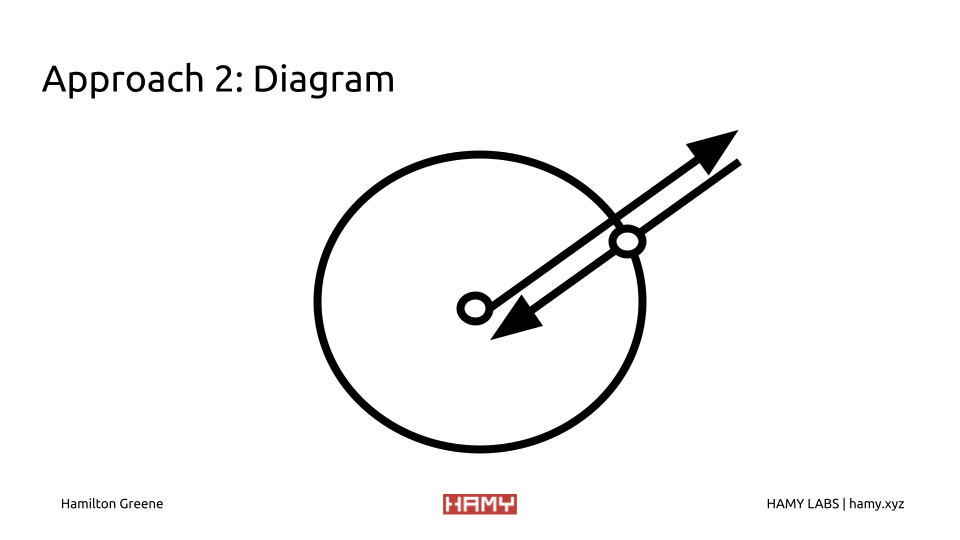Essay - Published: 2021.07.20 | 3d | collider | mesh | unity |
DISCLOSURE: If you buy through affiliate links, I may earn a small commission. (disclosures)
I've been working on some Monoliths recently (like the one above) that explore autonomous systems through the independent movement of hundreds and thousands of individual objects. To effectively (and efficiently) facilitate this, I wanted a way to spawn my objects inside of a given shape - be it a cube, sphere, triangle, or something more elaborate.
The problem I ran into was: how do I find a random point within an object in Unity 3d?
Goal: Spawn objects inside of a predefined shape
Problem: How to find a random point inside of a shape
In this post, I'll share some approaches I tried, how they work, and some drawbacks of each.
The first approach I took was a simpler one - take the rectangular / box-like Bounds and compute a random point in it.
To understand this approach we need to first understand a few terms:
3D Mesh
From Wikipedia: "A collection of vertices, edges, and faces that defines the shape of a polyhedral object".
This is basically the 'thing' you see in 3d environments that gives an object its shape. It's what makes one GameObject look like a sphere vs a cube.
Bounds
From Unity documentation: "An axis-aligned bounding box, or AABB for short, is a box aligned with coordinate axes and fully enclosing some object."
So for an unrotated rectangle, the Bounds will align with the underlying Mesh.
For other Meshes like a sphere, the Bounds will still be rectangular so there's going to be some imprecision here.
Using the Bounds to compute a random point is pretty straight forward:
Source code in C#:
public Vector3 GetRandomPointInBounds(Bounds bounds) {
float minX = bounds.size.x * -0.5f;
float minY = bounds.size.y * -0.5f;
float minZ = bounds.size.z * -0.5f;
return (Vector3)this._gameObject.transform.TransformPoint(
new Vector3(Random.Range (minX, -minX),
Random.Range (minY, -minY),
Random.Range (minZ, -minZ))
);
}
Note: We use Transform.TransformPoint to convert from the Bounds' Local Space to World Space
Now this approach does have some drawbacks:

Bounds drawback examples
After fixing the simple cube spawning problem I of course got ambitious and decided to move onto more complicated things - like spawning a bunch of cubes in the shape of a triangle! Approach 1 had imprecision problems (i.e. spawning my triangle in the shape of cubes!) so Approach 2 aimed to fix that.
For this approach, we introduce two more concepts:
Collider
Colliders are components specifically built to handle collisions. There are a few kinds but you'll often see Colliders whenever looking for intersects / overlaps with objects in real time.
Primitive Colliders: simple shapes and fast to compute (cubes, spheres, etc)
Other colliders: More complex shapes but slower to compute (can be the same shape as an object mesh)
RayCast
Like a line, but instead of two points is just an origin point, a direction, and a distance.
Can think of this like casting a fishing line or throwing a ball - if their arc was a completely straight line. You set where you cast from, what direction, and how far it will go.

Colliders + RayCast Diagram
Using a RayCast + Collider to find a random point within a mesh:
This method assumes that center of the object is inside of the object. If not, you're gonna get some weird results.
Example class using Colliders and RayCasts in C# to find a random point inside a mesh:
using System.Collections;
using System.Collections.Generic;
using UnityEngine;
using UnityEngine.Assertions;
public class ColliderRandomPositionProvider : IPositionProvider
{
private Collider _collider;
private GameObject _gameObject;
private float RayLength = 1000.0f;
public ColliderRandomPositionProvider(GameObject gameObject) {
var collider = GetColliderFromGameObject(gameObject);
this._gameObject = gameObject;
this._collider = collider;
}
public Vector3 GetPosition() {
Vector3? newPoint = null;
var _ = TryGetRandomPointInCollider(this._collider, out newPoint);
// Fallback to using bounds
if(newPoint == null) {
var meshPositionProvder = new MeshPositionProvider(this._gameObject);
newPoint = meshPositionProvder.GetPosition();
}
return (Vector3)newPoint;
}
// Pulled from https://forum.unity.com/threads/pick-random-point-inside-box-collider.541585/#post-6970754
private bool TryGetRandomPointInCollider(Collider collider, out Vector3? point) {
point = null;
var randomDirection = GetRandomDirectionVector3();
var random = new System.Random();
var ray = new Ray(
this._gameObject.transform.position,
randomDirection);
if(collider.Raycast(ray, out var hit, Mathf.Infinity)) {
point = VectorUtilities.LerpByScalar(
this._gameObject.transform.position,
hit.point,
(float)random.NextDouble());
return true;
}
// If we didn't get a hit going outwards, try the opposite direction
ray.origin = ray.GetPoint(RayLength);
ray.direction = -ray.direction;
if(collider.Raycast(ray, out var hitReverse, Mathf.Infinity)) {
point = VectorUtilities.LerpByScalar(
this._gameObject.transform.position,
hitReverse.point,
(float)random.NextDouble());
return true;
}
return false;
}
private Collider GetColliderFromGameObject(GameObject gameObject) {
var collider = gameObject.GetComponent<Collider>();
Assert.IsNotNull(collider);
return collider;
}
private Vector3 GetRandomDirectionVector3() {
return Random.insideUnitSphere.normalized;
}
}
VectorUtilities - used for finding a point between Point A and Point B:
using UnityEngine;
public static class VectorUtilities {
/*
Lerp between a and b.
LerpScalar scales distance from a on ab line.
*/
public static Vector3 LerpByScalar(
Vector3 start,
Vector3 end,
float distanceScalar
) {
Vector3 result = distanceScalar * (end - start) + start;
return result;
}
}
There are still a few drawbacks with this approach and I haven't handled every edge case:
But this worked well for me and I'll figure those out when I get there =)
Shout out to all the Unity forum Q&As out there. It took me hours to get this solution working but it would've taken me much longer without them.
You can check out my finished monoliths on IG: @hamy.art
In Collisions and RayCasts,
-HAMY.OUT
The best way to support my work is to like / comment / share for the algorithm and subscribe for future updates.